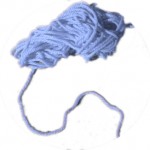 It’s easy to come up with metaphors, but do they work? Let’s try.
It’s easy to come up with metaphors, but do they work? Let’s try.
EXERCISE
Make two separate lists of words and word-groups. On the left, list tangible things that easily spring to mind. Now cover it while you work on the second list (or your brain, if it’s anything like mine, will try to cheat by making concepts that suit the terms you’ll be borrowing). On the right hand side, list intangible things and complex ideas.
It’s good if your tangible things are also very visual, by the way. Of course imagery can incorporate concepts, sounds and smells, but let’s go with visual for now.
Try not to ‘intend’ anything; the point is to try to surprise yourself when it comes to matching terms to ideas.
An example:
| kitten | ambition |
| tin whistle | attraction |
| sock drawer | political expediency |
| wool | togetherness |
| hinge | the art world |
| termite | politics |
| shark | suburban life |
| bus | old age |
| castle | preventive medicine |
| Siamese twins | marriage |
| pebble | envy |
| cellophane | solitude |
| chocolate | summer |
| onion | death |
| zipper | hesitation |
When you’ve got your two lists, read across the page and try to find links between them.
Can ambition be represented by a kitten? It’s hard to know, so let’s see:
The kitten of his ambition toyed with the wool ball of her… Oh, crikey. That’s dreadful.
Still, I’m thinking there could be a link if I use ‘ambition’ to mean ‘desire to pursue romantically’.
He found himself studying her wool as she jerked another length out to knit with. The ball danced in his vision, tantalisingly out of reach. He wanted to grasp it, to stop her knitting, but instead he only mewed: ‘I want you.’
There’s a kitten there, surely. And ambition. And also (another word in the list!) a ball of wool. So I’d say I’ve been somewhat successful, wouldn’t you?
What can you come up with out of my list words or some of your own?
It’s fine to jump around each list, by the way. There’s no need to feel you absolutely have to stick to reading across the page, though I have to admit, ‘tin whistle of attraction’ might have something going for it.
But what can you do?






